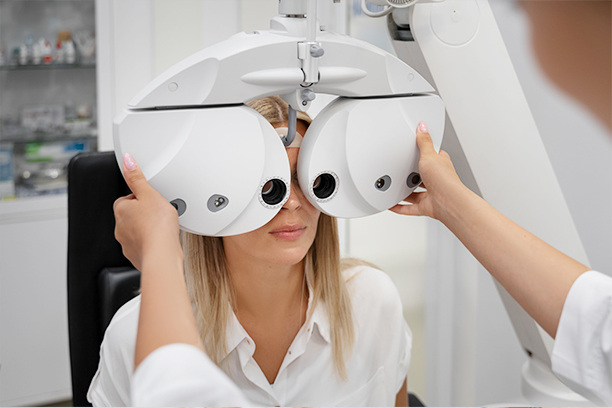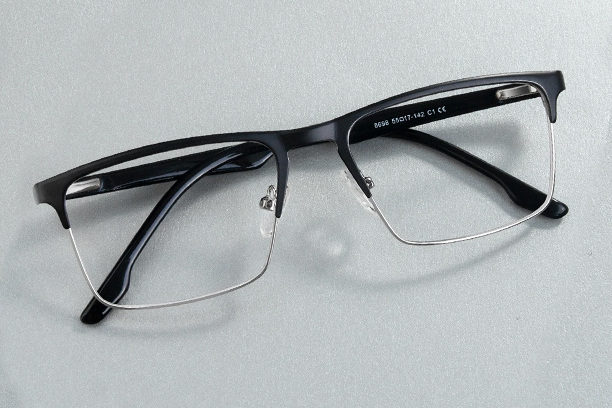- Eyeglasses
- Glasses
- Shop By Frame
- Shop By Style
- Featured
- Premium Selection
- Sunglasses
- Kids' Glasses
- Readers
- Shop By Lens
- Promium Selection
- Accessories
- My Orders
- Order Tracking
- Blog
- Have a Question?
- E-mail:cs@efeglasses.com

Rethinking Eye Exams: Beyond Vision Correction
In today's digitally integrated medical landscape, eye examinations have evolved from simple vision tests into a vital window for monitoring systemic health. Research increasingly shows that many vision impairments can be prevented with timely detection and intervention. This article explores the modern significance of eye exams and the science that supports their expanded role.
1. Routine Checks: Your Personalized Defense System
Modern ophthalmology promotes individualized screening frequencies based on age, health conditions, and lifestyle. For adults, annual exams are often recommended—not as a formality, but based on risk modeling related to refractive changes and silent ocular diseases.
High-risk groups benefit from more tailored protocols:
Chronic Conditions: For example, diabetes patients should undergo regular retinal exams to detect microvascular changes.
Genetic Risk Factors: Individuals with a family history of glaucoma or specific gene variants may benefit from more frequent intraocular pressure monitoring.
Medication Side Effects: Long-term use of corticosteroids can elevate the risk of cataracts and should be monitored accordingly.
In children, vision screening plays a critical role—particularly between ages 0–3, a sensitive period for visual development. Early detection of amblyopia (lazy eye) can significantly improve long-term outcomes.
2. A Diagnostic Revolution: Powered by Technology
Today's eye exams are supported by a robust technological matrix that includes:
Structural Imaging
Wide-field retinal imaging devices now cover over 200° of the retina, vastly improving the detection of diabetic retinopathy and other conditions. Corneal-level imaging helps quantify dry eye severity and optimize treatments.
Functional Testing
Multifocal ERG (electroretinography) maps retinal activity across hundreds of zones, enabling early glaucoma detection. Virtual reality vision simulators can evaluate driving or reading abilities in dynamic environments.
AI-Powered Intelligence
Artificial intelligence has revolutionized image analysis. Systems like IDx-DR—approved by the FDA—can autonomously grade diabetic retinopathy, increasing diagnostic speed and accessibility in primary care.
3. Eyes as a Mirror of Systemic Health
The retina offers a non-invasive view of microcirculation and neurovascular health. Eye exams can now serve as a biomarker gateway for detecting or predicting:
Cardiovascular Disease: Changes in retinal vessel ratios may indicate increased heart disease risk.
Neurodegenerative Disorders: Retinal thinning has been linked to preclinical Alzheimer’s disease.
Oncology and Autoimmune Signals: Certain retinal signs can even flag cancers or systemic lupus as first presentations.
4. Toward Precision Eye Health
Genetic insights and data-driven personalization are transforming eye care:
Carriers of the ABCA4 gene can now be enrolled in lifetime macular monitoring.
Individuals with MYOC mutations may benefit from customized glaucoma treatments.
Pharmacogenomics helps optimize medication response, improving treatment efficacy significantly.
In parallel, digital customization—from 3D-fitted orthokeratology lenses to virtual reality amblyopia therapies—is improving treatment outcomes and user comfort.
5. Smarter Choices in Eye Care Access
Modern eye care also emphasizes efficiency and equity. The “20/80 screening model”—screening 20% of the population to focus 80% of healthcare resources—has shown success in glaucoma prevention programs, such as in Singapore.
Key takeaways for individuals:
Insurance coverage can reduce the cost of OCT and other advanced tests.
AI triage systems are narrowing the diagnostic gap between primary clinics and top-tier hospitals.
Telemedicine has cut patient travel time and follow-up costs by up to 40% in pilot programs.
Final Thought
From microscopic retinal scans to AI-powered diagnostics, today’s eye exam is no longer a 20-minute routine—it’s a portal into your whole-body health. Embracing regular, personalized screenings is not just a smart health move—it’s a step toward a future of better vision and better living.
SUBSCRIBE & SAVE
- Shop All
- Best Sellers
- Eyeglasses
- Sunglasses
- Reading Glasses
- Shop By Frame
- Shop By Style
- Glasses Colors
- Black Glasses
- Blue Glasses
- Brown Glasses
- Gold Glasses
- Green Glasses
- Orange Glasses
- Pink Glasses
- Red Glasses
- Yellow Glasses
- Silver Glasses
- White Glasses
- Purple Glasses
- Tortoiseshell Glasses
- Clear Glasses
- Transparent Grey Glasses
- Mens Blue Glasses Frames
- Red Sunglasses
- Rose Gold Glasses
- White Frame Sunglasses
- Black And Clear Eyeglass Frames
- Black And Gold Glasses
- Black And Red Glasses
- Black Glasses For Women
- Black Rectangle Glasses
- Black Rectangle Sunglasses
- Blue Light & Blocking Glasses
- Blue Women Eyeglasses
- Tips & Guides
- About EFE
- Shop






















